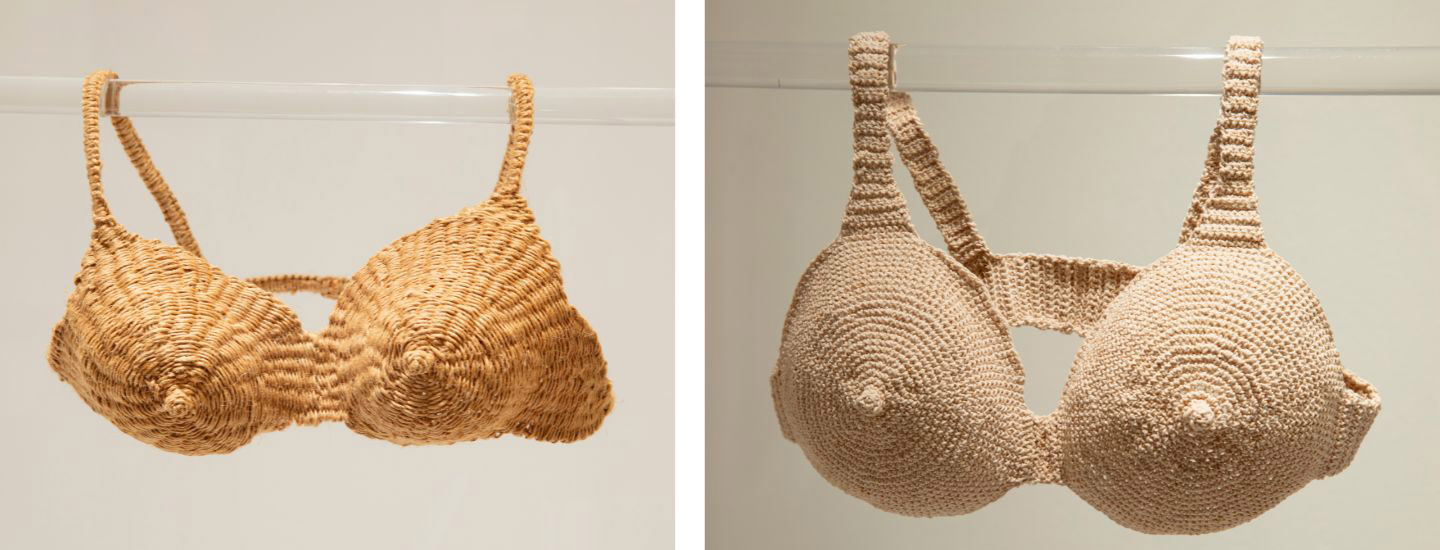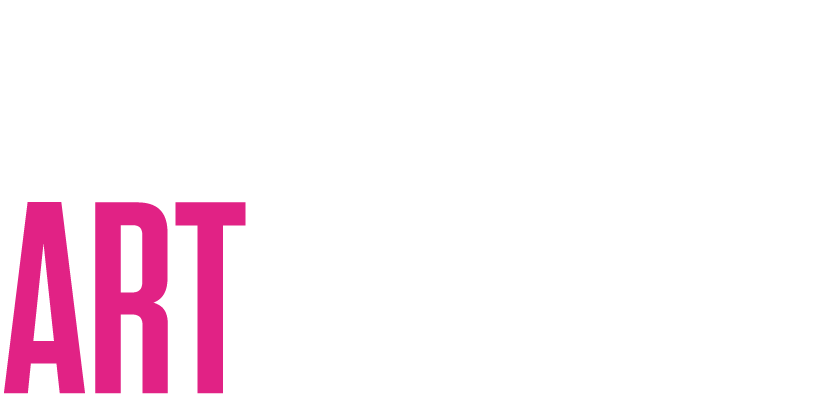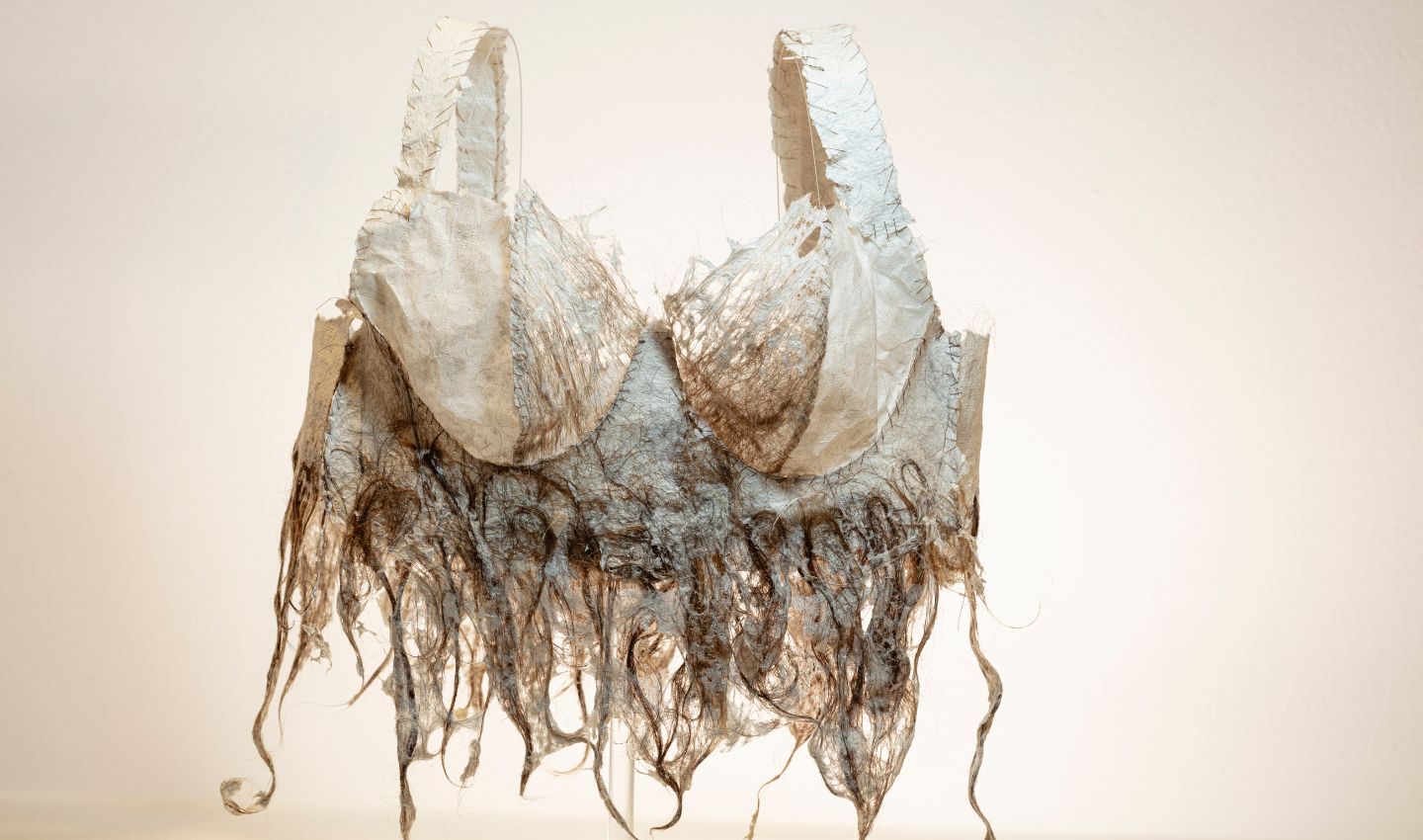Q&A: Arja Välimäki on With Every Fibre of Our Being
Local artist Arja Välimäki's works speak to her connection and love of nature and the female voice. We catch up with her to discuss her art practice and motivation behind her work.
You can see her work, alongside other works from our collection which examine diverse relationships with fabric and fibre, as part of the exhibition With Every Fibre of Our Being closing 18 August.
Tell us a little about yourself and your art practice. What is your driving motivation to ‘make’?
I started my practice using the tools I had available to express myself. I was always aware that I am part of a greater collective of women's voices. I was drawn to motifs and shapes in my practice. At that time, when I first started making these works, I really didn’t feel as though I had a voice. I had migrated to Australia from Finland in 1993. As a young woman I experienced significant cultural differences between Finland and Australia. It felt more equal around gender issues back home, but I found this quite radically different in Australia.
I started exploring ideas around the female voice in my practice, looking at issues around this subject matter which also included the significant issues around domestic violence in this country. In this series of works I created diverse bras using different techniques and different mediums, and well it was essentially a very meditative process for me. While I made the works, I was reflecting on the issues, and I also thought about other women I had known in my life. While keeping the identity of the subject was personal and private…well, I reflected deeply while ‘making’ them and it was very much about process and processing.
How did you feel on learning your works were included in With Every Fibre of Our Being?
When I walked into the exhibition space and saw the works, well I suddenly felt a warm feeling in my heart. I hadn’t seen the works for ages, well not for many years and it was meaningful to see them again. I never wanted to be overtly political in my practice, but seeing the works again made me realise how relevant they still are today, when we consider many of the issues that are still happening in Australian society.
The work artists make is vital for society. Shortly after seeing the work in Every Fibre of Our Being exhibition, I had to return to Finland and I am still currently here while doing this interview. I have had the opportunity to experience other contemporary exhibitions here in Finland, including video and installation addressing refugee narratives. I am very aware that artwork has the potential to be progressive and very powerful - it has the power to ask people to reflect on different issues - even ideas around having more compassion.
What meaning lies behind this specific work, and can you explain a little about the technique and process used?
Some of the materials I used included paper and human hair, which I think is like fragile armour. Hair is a very intimate material, but it is also very strong. I consider hair to be like wool, being a natural fibre. Interestingly one of the bras in this series of works used hair that Louise Brand gifted me. Who would have known Louise would have curated this exhibition all these years later. While I was using human hair in my work, I remember at the time I also considered using pubic hair, but I thought that might be too much - a bit too radical! I also collected my own hair from my brush over an extensive time and incorporated it into the work.
In another of the pieces I used crotchet. I was never really interested in this technique, but my mum and my grandma used to crochet a lot when I was growing up, and I loved what they made. So, I explored this technique using the same or similar materials they used, and obviously I was referencing them while processing and re-connecting to my ancestors, especially the women.

How do you think this work relates to the much broader history of women and textiles and what specifically interests you about textiles in a more contemporary context?
While this work is about being female, it is also about domesticity and woman’s duties. Women have traditionally always expressed themselves through their textile practice, as they also were while painting. I have always been very interested in technique and process. I come from a long line, well many generations of weavers and makers of textiles. I thought it was normal and that everyone had the same experience! My grandmother wove linen, even making towels, rugs, and bedding. There was always some project going on. I remember her cutting up old clothes to repurpose and make new things. So, when I was making these works in this exhibition, I was also reflecting on this too, again on the women in my family tree of makers and in turn, how this history impacted and shaped me.
I’m also interested in contemporary textiles especially when the work has a message or story that has a cultural connotation. I think when textile mediums and techniques are used as an art medium, they can be very expressive and tactile.
Has your practice changed much since these works were acquired for our Collection?
I actually undertook my training at the University of NSW with a Bachelor of Painting and Drawing Major. Although textiles have been a very prominent medium in my work, my current practice focuses on painting and in a way marries the two mediums. I have always been painting, since 1998. Around that time, I was deeply influenced by an exhibition I saw by Japanese Artist Yayoi Kusama at the MCA and I thought - I can do that. That is what I want to do too.
Also, one of my grandmothers was a professional painter. She started painting landscapes to sell to put bread and butter on the table, to feed her children during the Second World War, so that too was a profound influence on me and my artistic practice.
My paintings, well I experience the process as though I am weaving them. It is a spiritual thing really and I love painting, and I prefer to spread positive energy and feelings in my work - basically, I want to spread joy and love - and in my practice I feel I am doing just that. I have been focusing on works about fish, underwater and creating another world.
This body of work came out of an experience I had in 1995 when I was stung by a sting ray. I was housebound following the accident for three and a half months. I was new to the country, and I was all alone, and it was during this very challenging time that I decided to really undertake my practice. That I was going to focus on that. The experience had a huge impact on me…. but through it I moved on to have respect for the beauty that lay within the challenges and suffering. A very negative and painful experience gave me the opportunity to be true to myself.
What do you value the most about your current practice and what direction are you planning to take it?
I have a studio space that I go to almost every day. I step into the space and I just start working, but I am very aware of my energy and I only paint when I have the right energy. If I don’t it shows in the work. When I make work, it is very important to me that I am centered, grounded and joyful. This matters to me. This is the way I like to work. I have become pretty good at this practice and am disciplined. I also make sure I walk every day near the ocean and nature. Well, life still happens. I think as artists, well we are basically very sensitive people and it’s not always easy, but I work towards having positive awareness and trying to put some light into the world. I think a lot about what’s happening in the world, and I think about nature, my wanting to protect nature and thinking about what is of true value in the world.
Do you think there is a resurgence of interest in textile and fibre art (or was it always so, irrespective of the World Wide Web or Internet) and why do you think this is?
I am so happy to be alive with access to social media. I really think it is a powerful medium and such a strong tool. Textiles have really been embraced by people. This new media means people can relate to textiles better and it’s on its own journey and certainly has a new voice now. Social media and the internet allow the younger generation to teach themselves, to gain back knowledge of the crafts and techniques and to also access them as tools and techniques to be used as a meditative process - textiles are quite healing. I also believe being sensitive is the new strong.
I have been reading a book called “Dying To Be Me” by Anita Moorjani. She writes - “We are all connected to one another in this great tapestry we call life. She saw it that each person’s life is a thread and we are all woven and interconnected to each other”.
Image: Arja VÄLIMÄKI, Bras of Identity,1999, hessian, glue, handmade paper, hair, crotchet string, sugar starch, plant fibre, jute twine. Gift of Ray Connelly and Bradford Temple, 2000. Photographs by Bernie Fischer.

